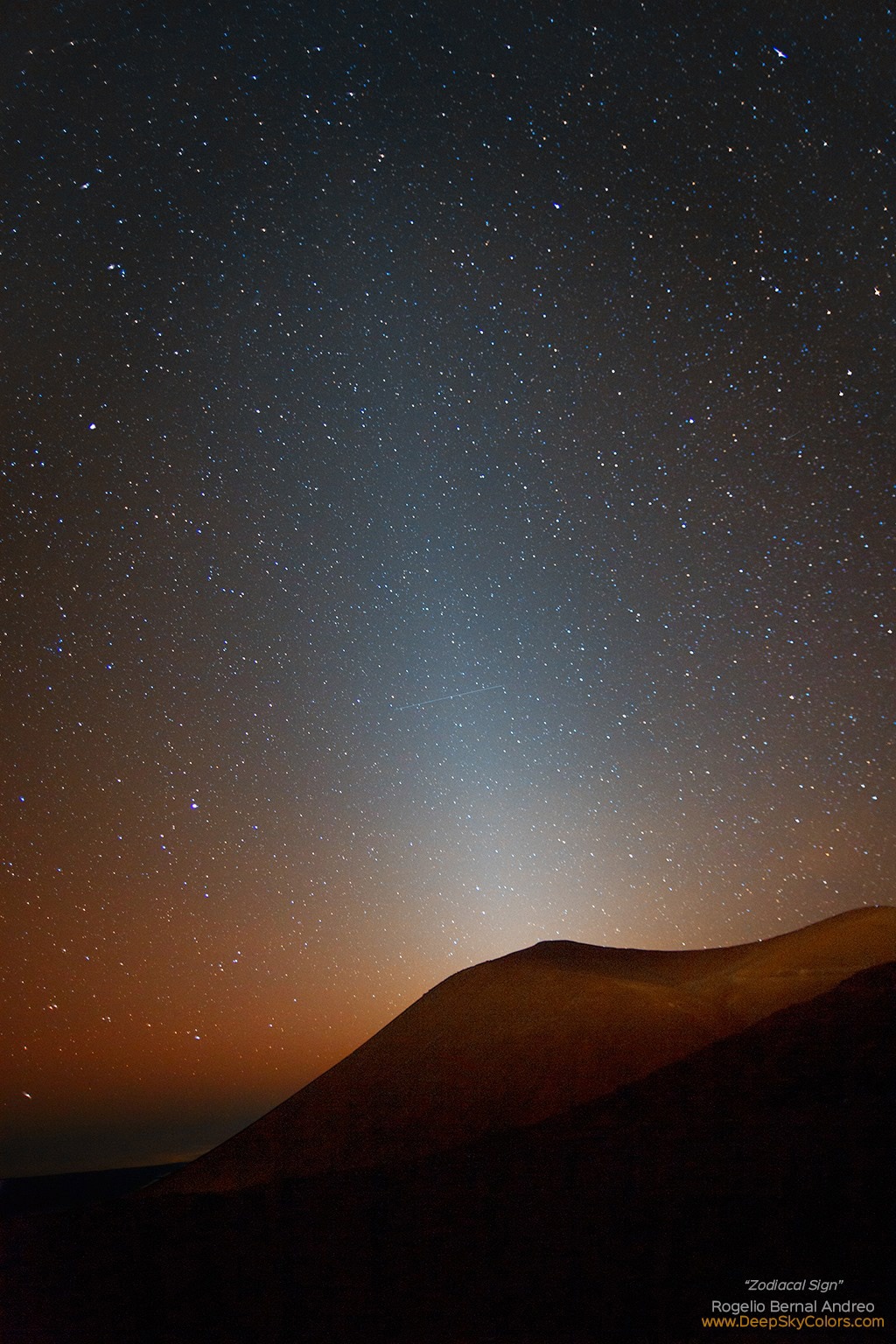Create a free profile to get unlimited access to exclusive videos, sweepstakes, and more!
By the Light of the Zodiac

Given how much time I’ve spent outside at night looking up, it’s funny to think there are still quite a few phenomena I’ve never seen. One that’s very near the top of my list of “Must See” things is zodiacal light.
This is the glow of dust and particles shed by comets, ones that orbit the Sun on relatively short paths. Over time these objects are influenced by the gravity of Jupiter, so we call them Jupiter-family comets. Made of ice and rock, they shed this material as the Sun warms them. Eventually, this stuff suffuses through the inner solar system, sticking pretty close to the same orbital planes as the planets, forming a flattish disk.
From Earth, we see the material reflecting sunlight back to us, glowing in a band across the sky. The photo above, taken at Mauna Kea by Rogelio Bernal Andreo, is one of the best shots I’ve seen of zodiacal light. It’s very faint, so you need dark skies—which the volcano provides (I think the faint streak across the middle is from a satellite).
Now follow along here: The planets, including the Earth, orbit the Sun on pretty much the same plane (from the side, the solar system’s planets’ orbits look flat). From the Earth, it looks like the Sun moves around us once per year. The path it takes across the sky is the same year after year, and we call this the ecliptic. The planets all move across the sky in that same path, too.
So, like clockwork, the Sun passes into the same constellations at a certain time every year. You know the names of these constellations: Sagittarius, Libra, Scorpius, Aries, Gemini … the constellation of the zodiac, or, if you prefer, the zodiacal constellations.
Since the glow we see from the cometary dust is also in this same plane, it too sticks to the same constellations, and we therefore call it zodiacal light. How cool is that? Cool enough that after a few years spending time in some rock band, a guitarist decided to go back and get his Ph.D. studying it.
Interestingly, the dust we see is not constant. Solar wind, interactions with Jupiter, and other effects would eventually blow it all away. It’s replenished by more comets coming in and renewing it. I found a paper describing this, and the astronomers found that the amount of dust injected into the cloud must be around 100,000 kilograms per second. That’s a stunning 3 billion tons per year!
Mind you, that’s spread out over a lot of volume. Like, trillions of cubic kilometers at least. So it’s pretty thin stuff … but thick enough to be seen, at least from Earth on a dark, Moonless night, and photographed so that we humans can gaze upon it in awe and wonder about the marvelous working of our solar system. That’s a pretty good deal for us, I think.















